Back in 2007, soil scientist Bruce Ball and his collaborators published a research paper on VESS – Visual Evaluation of Soil Structure [1] – and released a two page summary of the methods for anyone to use, free of any charge. The two-pager was printed on the back and front of quality paper, which was then laminated to form a durable sheet that could be taken out to the field as a guide and reference to quickly estimate soil health.
Recently, the Living Field editor was working with people creating an exhibition on regenerative farming to be held later in 2024 at a museum in the Tay Catchment. Questions around good and bad soils came up – was it possible to tell the difference between them without laboratory analysis, and were photographic guides available to illustrate soil quality for visitors to the exhibition?
VESS came to mind, since, as is evident from the reproduction below, it depicts soils of different quality. And Bruce was the obvious person to contact for guidance and photographs.
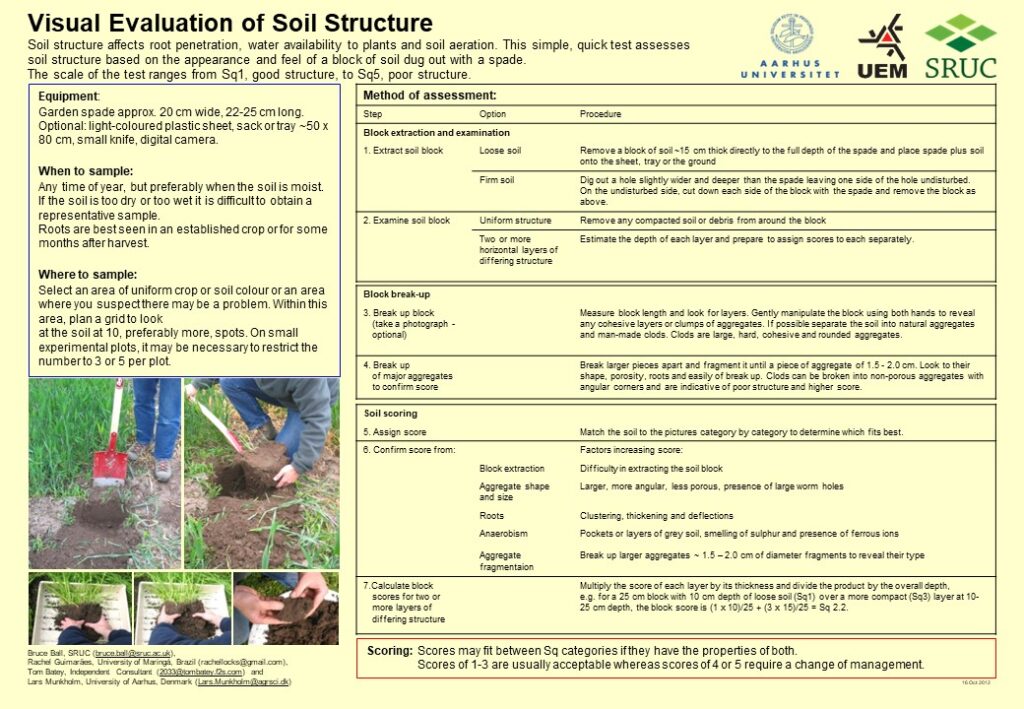
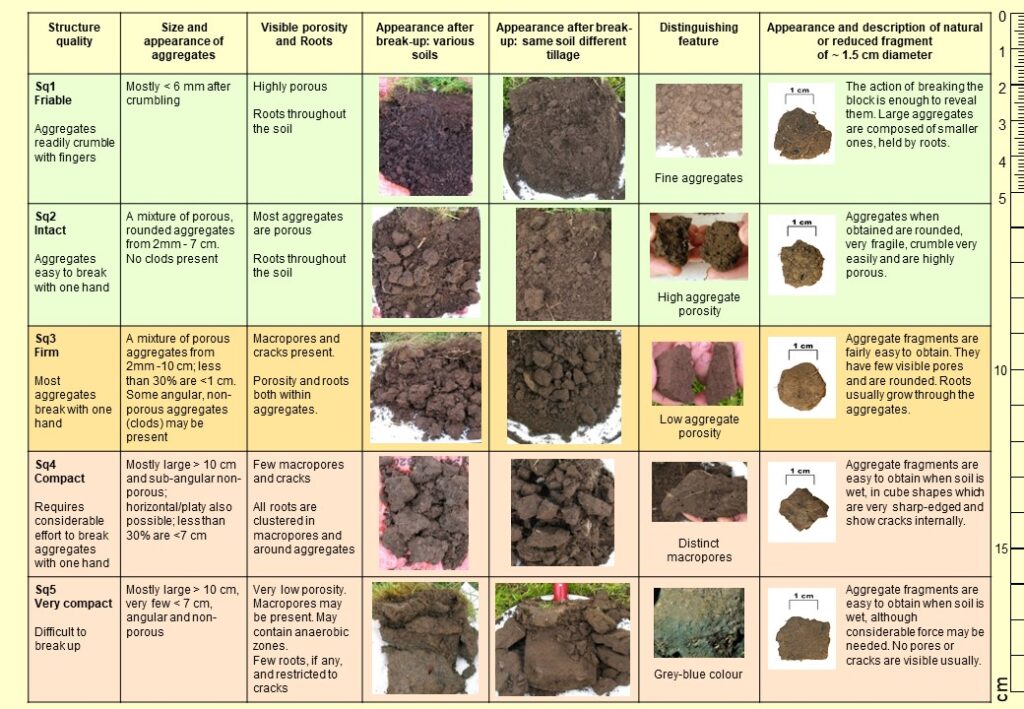
Plate 1. The two-page VESS guide to soil structure [1].
VESS is an example of scientific research condensing a great deal of technical information into an easy-to-use practical guide. Intended users were agronomists and farmers, and indeed anyone who wanted to learn a bit more about agricultural or garden soil.
Here are two contrasting images of the same medium-textured soil. One under woodland (left) has very good soil structure with many roots. The other under cereal cropping nearby (right) contains compacted clods below a fairly good structured surface layer. The VESS guide indicates for each soil the likely degree of pore space through which roots could penetrate the medium to extract nutrients and water.
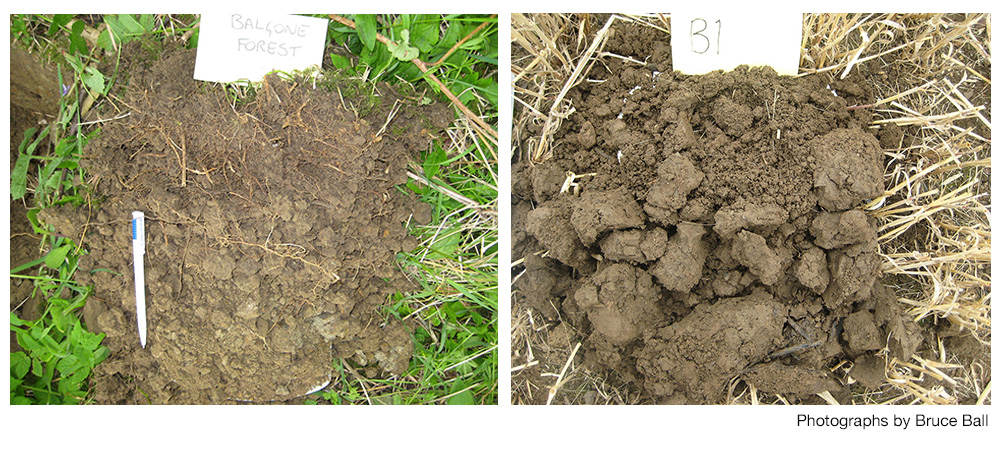
Plate 2. Two soils ready for Visual Evaluation, left from a woodland, right from a cereal field.
Since its initial publication, VESS has travelled to other parts of the world, including the Amazon Basin [2]. It is being adapted and trialled for new soils and regions, contributing to our understanding of global soil health.
New Book : Healing soil
Continuing his aim to bring the world of soils to non-scientists, Bruce has recently (2022) published a book titled Healing Soil – How soil health will save the planet and us [3]. The author writes:
“This book is a journey that explores the importance of our soil to our world and humanity and the connection that can be found between soil and both of these. Each of the three parts of the book contains a series of short illustrated items spotlighting a key way that soil contributes to the health of ourselves, our society and our planet. The items are illustrated either by artworks that I have created or by photographs to show the interplay between the fate of the soil and the fate of our world – from all of humanity down to the way we live our individual lives.”
Below are two examples of Bruce’s illustrations in the book.
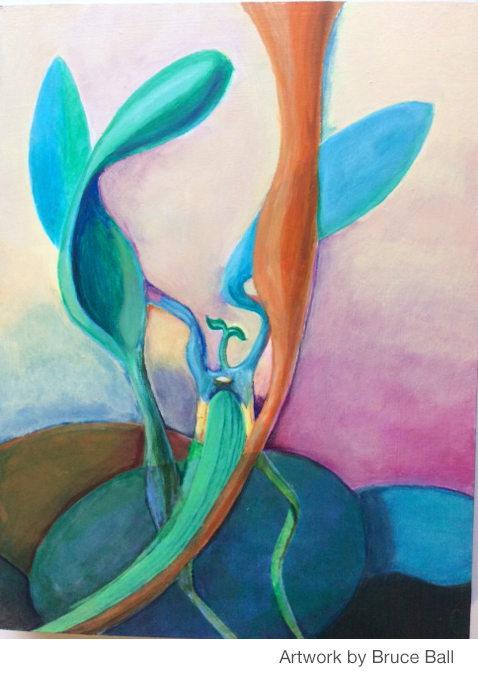
Soil greening power. Acrylic on board. The seed in the centre produces its seedling by the greening power of soil fertility thrusting from below.
References | links
[1] Ball BC, Batey T, Munkholm LJ (2007) Field assessment of soil structural quality – a development of the Peerlkamp test. Soil Use and Management 23, 329-337.
[2] Rachel M.L. Guimarães, Afrânio F. Neves Junior, Wellington G. Silva, Craig D. Rogers, Bruce C. Ball, Célia R. Montes, Bruno F.F. Pereira. (2017) The merits of the Visual Evaluation of Soil Structure method (VESS) for assessing soil physical quality in the remote, undeveloped regions of the Amazon basin. Soil and Tillage Research 173, 75-82, https://doi.org/10.1016/j.still.2016.10.014
[3] Ball BC (2022) Healing soil – how soil health will save the planet and us. Published by Bruce Ball, Roslin, Midlothian, UK and distributed by Kindle Direct Publishing Services, Amazon, Seattle, Washington, USA. Ed: search ‘author’ and ‘title’ to find web sites for online purchase.
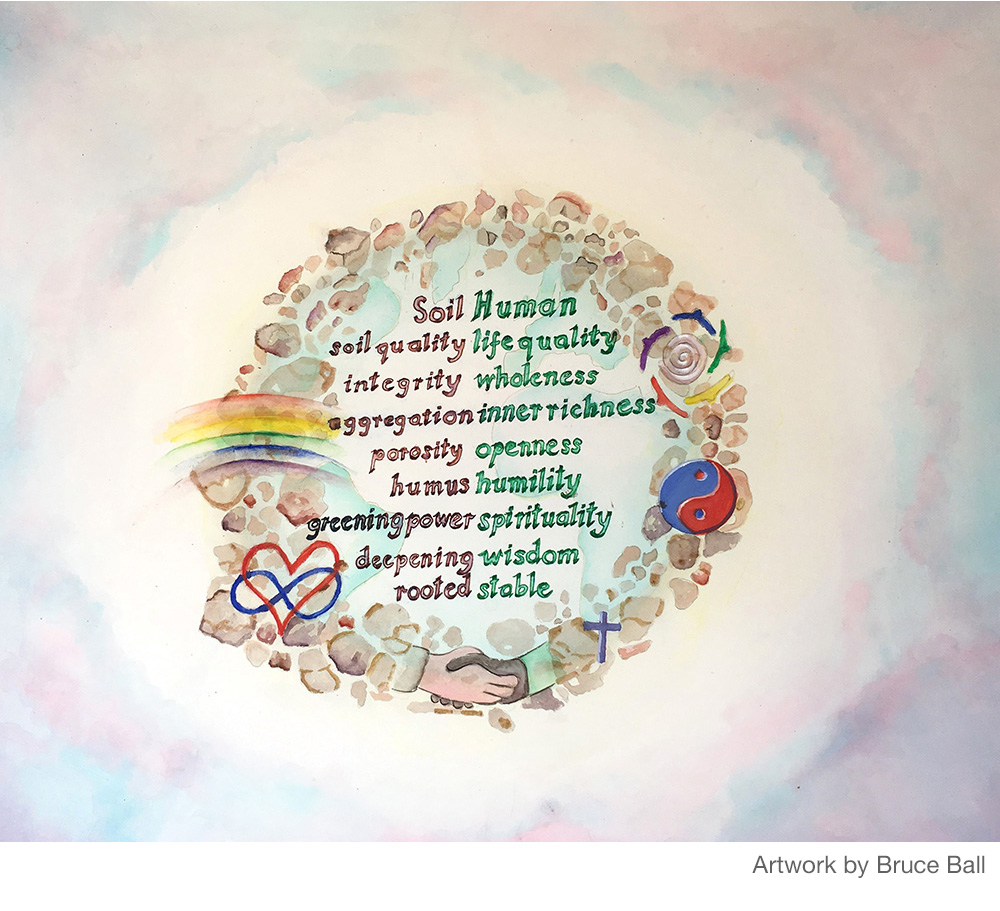
A World of Soil for Healing People and Planet Earth. Mixed media on paper. In the same way that soil encircles the World, when humans nurture soil-like properties they can work in unity to sustain life on Earth.
Contact
Email : bruceball62@gmail.com
Ed: many thanks to Bruce for sharing his knowledge of soils. His book [3] contains many striking illustrations that link this thin, life-sustaining layer to the future of all people.
